Breguet Tradition Automatique Seconde Rétrograde 7097 And Abraham-Louis Breguet Souscription Pocket Watch Deconstructions: What The Naked Watchmaker Didn’t Reveal – Reprise
by Ian Skellern
If you know absolutely nothing about the watch industry and this is the very first sentence about horology that you have ever read in your life, know this: watch brands exaggerate, often making seemingly impressive claims based on little to no substance.
However, the Breguet Tradition collection, as exemplified here by the Tradition Automatique Seconde Rétrograde 7097, does just what it says on the label: exude tradition.
And it does that very well.
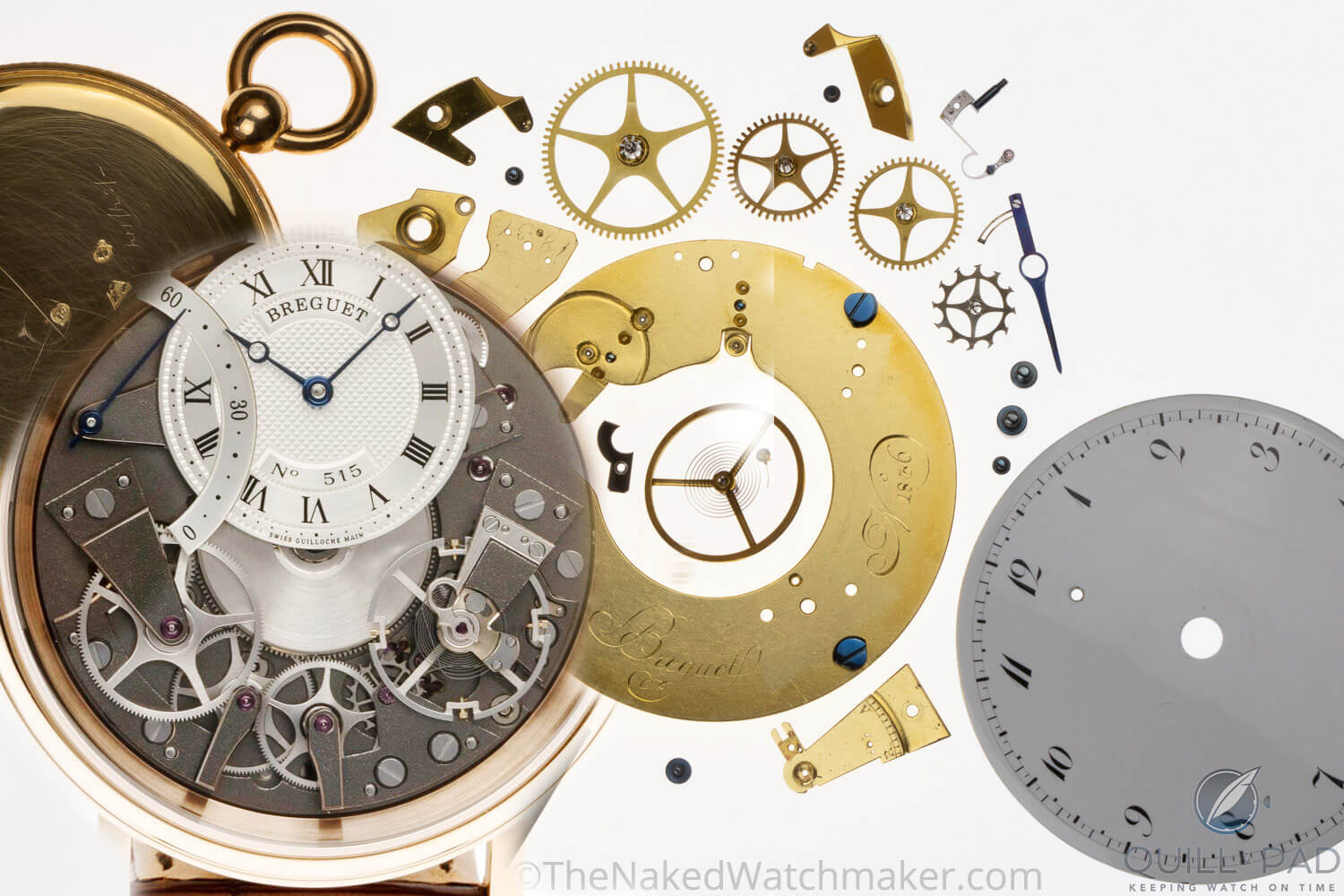
Breguet Tradition Automatique Seconde Rétrograde 7097 and deconstructed Abraham-Louis Breguet Souscription pocket watch
Tradition really runs that deep in this collection, but I don’t expect you to take my word for it. You can decide for yourself if I am exaggerating by looking at this comparison between a contemporary Breguet Tradition Automatique Seconde Rétrograde and an Abraham-Louis Breguet original Souscription Pocket watch more than two centuries old, physically and photographically deconstructed by The Naked Watchmaker, Peter Speake-Marin.
Abraham-Louis Breguet
Abraham-Louis Breguet (1747-1823) is considered by many, if not by most, the greatest and most influential watchmaker in history because of his horological inventions and innovations, many of which the industry still cherishes and produces in large quantities today. These include the tourbillon, repeater gongs, automatic winding (at least partially), balance shock protection, balance spring overcoil, and sympathetic clocks (though the latter is not produced in any quantity today).
But what really made Abraham-Louis Breguet’s reputation was that his technical genius was complemented and matched by both an excellent sense of design and superb business and marketing skills.
While born in Neuchâtel, Switzerland, Abraham-Louis Breguet worked and created most of his watches and clocks in Paris. He went to Switzerland briefly in 1793 at the start of the French revolution, returning to Paris two years later after the politics had stabilized.
Breguet and The Naked Watchmaker: deconstructions of Tradition Automatique Seconde Rétrograde 7097 and Abraham-Louis Breguet Souscription pocket watch
The Naked Watchmaker (TNW), aka Peter Speake-Marin, has recently begun a series of deconstructions of a broad selection of modern Breguet watches and movements, starting with the Classique 5177, a relatively simple (for Breguet) three-hand, time-only dress watch.
While I very much appreciate and learn from the deconstructions on The Naked Watchmaker, I wanted to know a bit more.
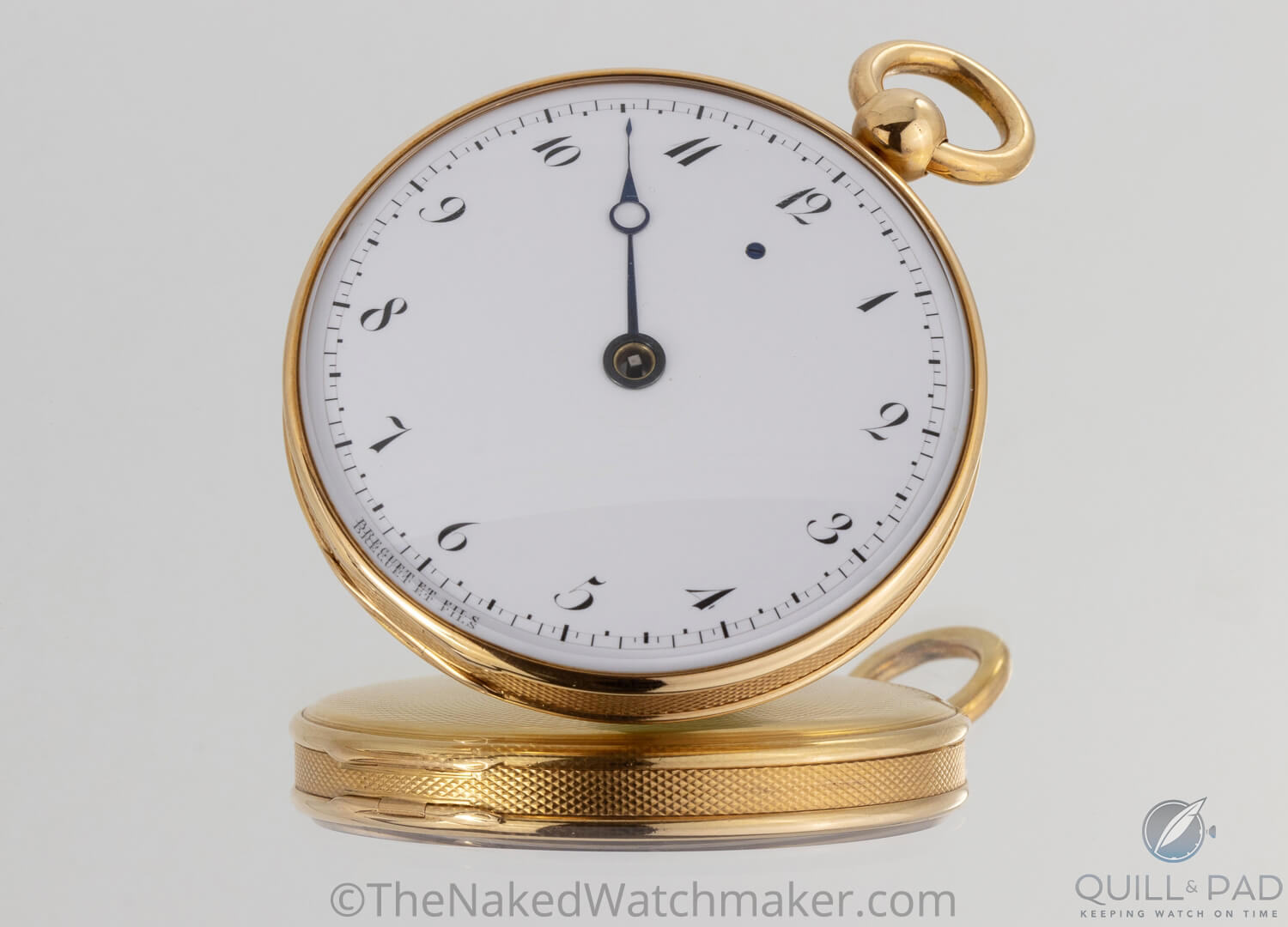
Abraham-Louis Breguet Souscription pocket watch circa 1805
With the kind permission of TNW, here are a few things that The Naked Watchmaker didn’t tell us about the Breguet Tradition Automatique Seconde Rétrograde 7097 and Abraham-Louis Breguet Souscription pocket watch deconstructions, which I found interesting and thought you might as well.
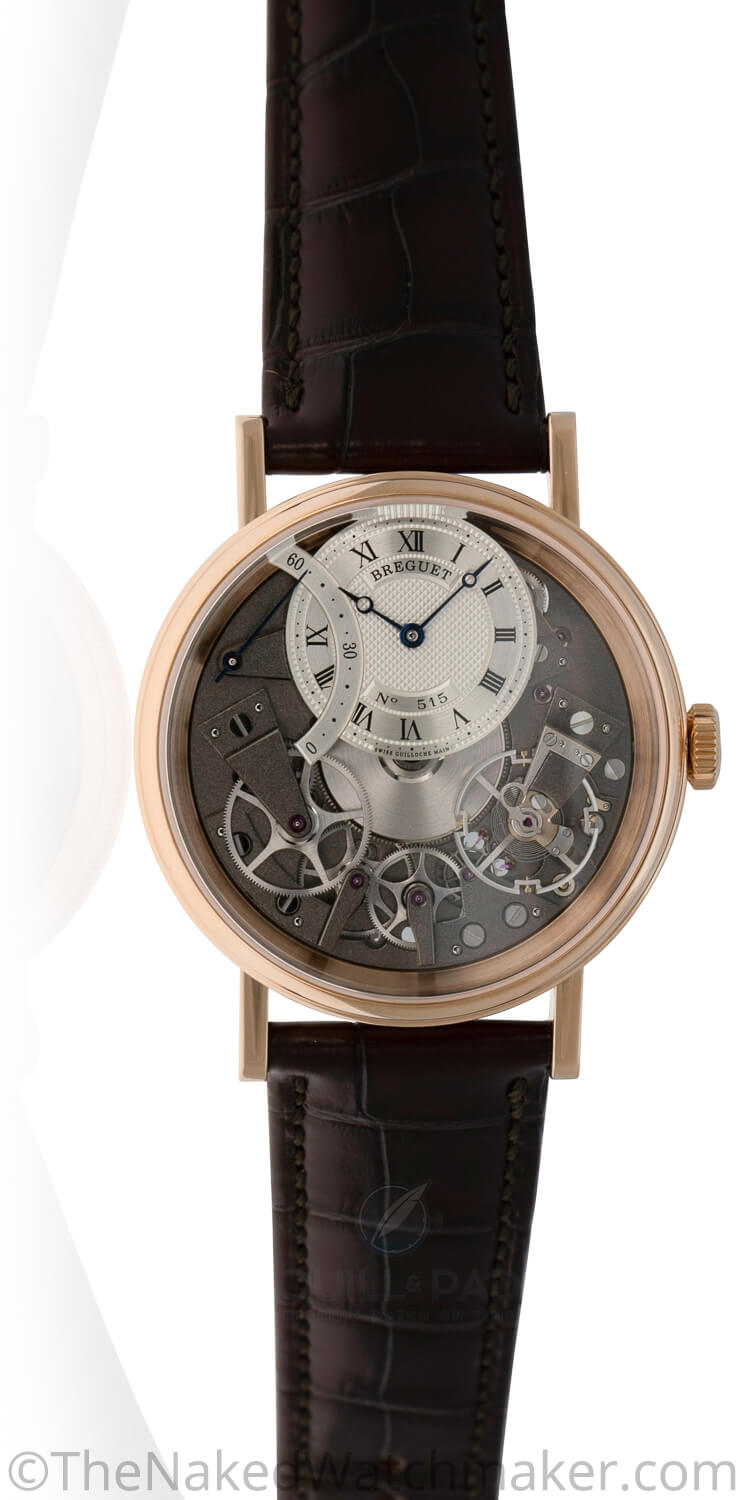
Breguet Tradition Automatique Seconde Rétrograde 7097
Tradition is symmetry: Breguet Tradition Automatique Seconde Rétrograde 7097 and Abraham-Louis Breguet Souscription pocket watch
Symmetry: the contemporary Breguet Tradition Automatique Seconde Rétrograde and 200-year-old Abraham-Louis Breguet Souscription watch display architectural, horological, and visual symmetry across their respective dials and movements; this is a symmetry that spans more than two centuries.
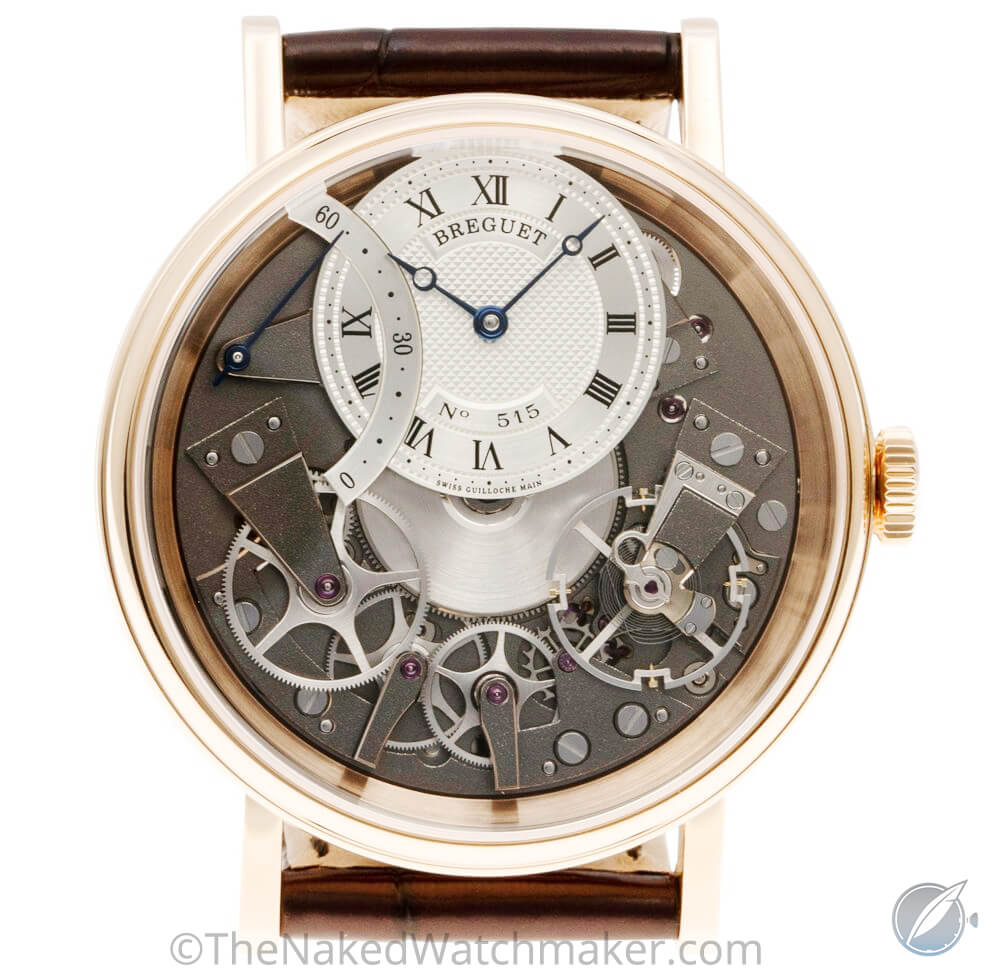
Symmetrical movement of the Breguet Tradition Automatique Seconde Rétrograde 7097
Symmetry in the visual movement architecture: the central mainspring barrel is flanked by the balance and center wheel at 6 o’clock and 9 o’clock.
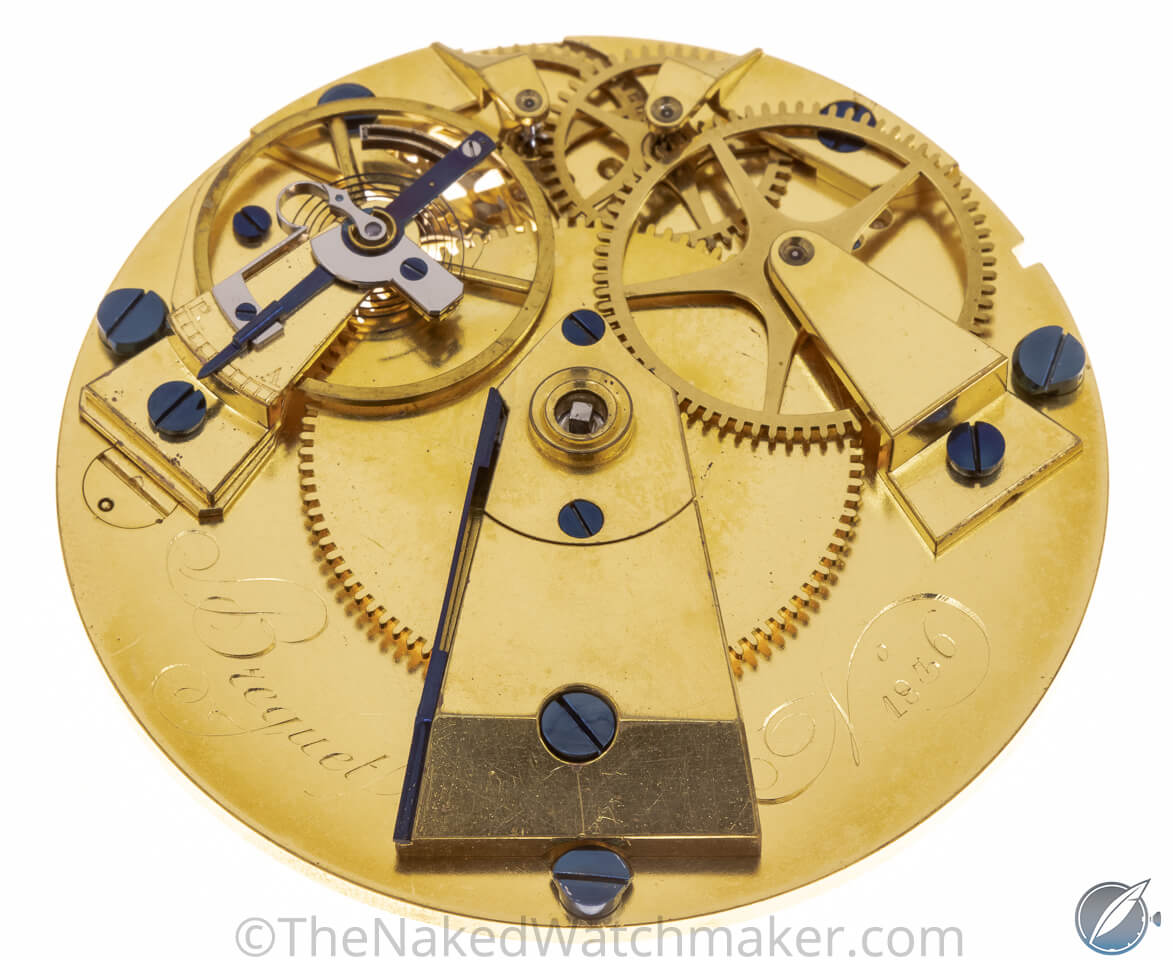
Symmetrical movement of the Abraham-Louis Breguet Souscription pocket watch circa 1805
Symmetry in the stepped bridges. Symmetry in the pare-chute type balance shock protection system. Symmetry in the shape of the gear wheels. Symmetry in the frosted movement finishing. Symmetry in the technologically advanced escapements.
Symmetry, there’s lots of it.
Abraham-Louis Breguet Souscription pocket watch circa 1805
Abraham-Louis Breguet made many of his most well-known watches for Europe’s royalty because few others had the money to afford the development of such expensive complications.
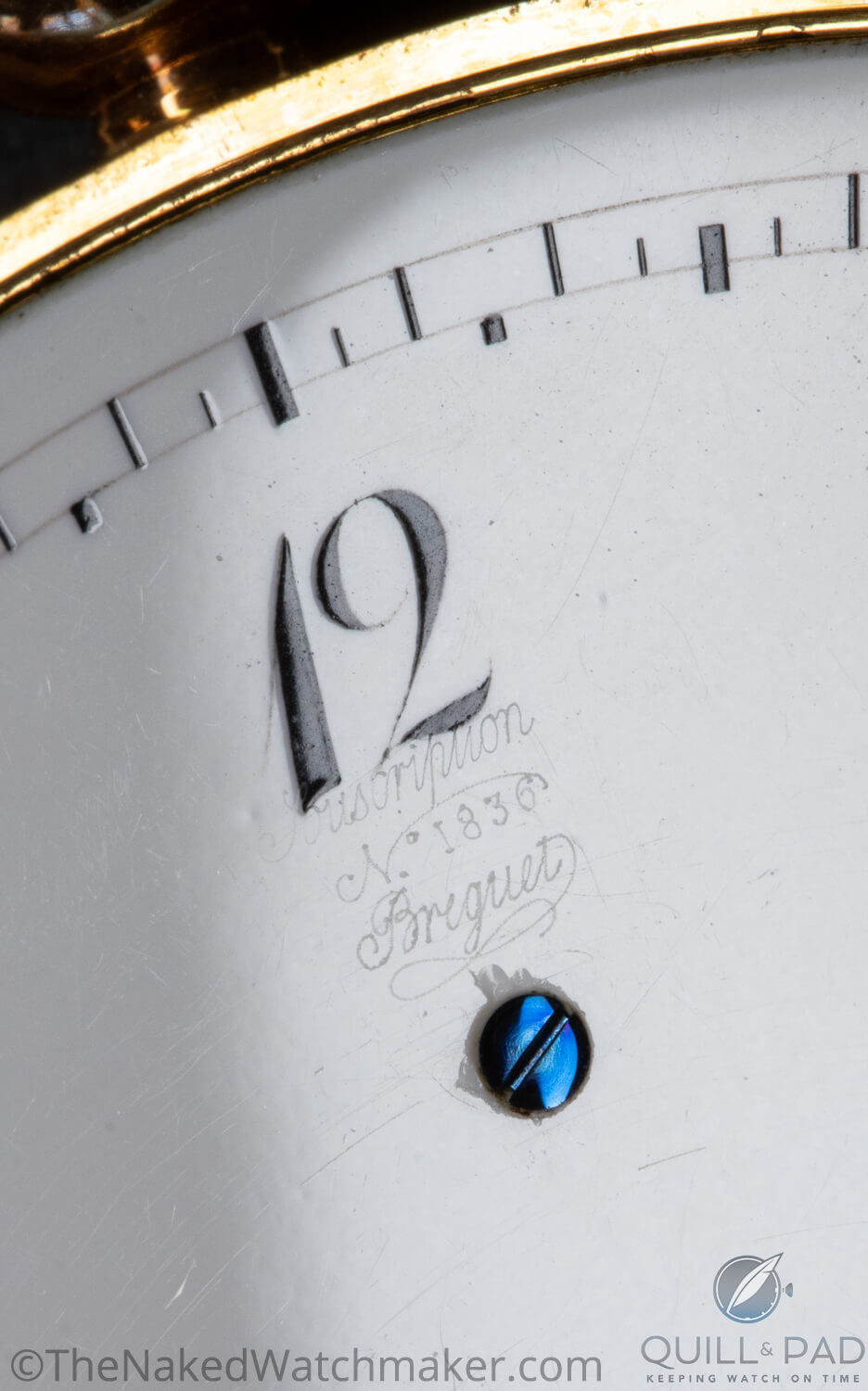
Secret signature and serial number of this Abraham-Louis Breguet Souscription pocket watch circa 1805
It’s worth bearing in mind that Breguet didn’t just develop his own tourbillon, minute repeater or perpetual calendar, he first had to invent a hitherto nonexistent complication, develop it, then produce it. And he then had to recuperate those substantial invention and development costs from very small numbers of timepieces, often just one unique piece.
Abraham-Louis Breguet was known then, as he is now, for his expensive original complications, but he decided to create a watch at a price level more within the financial reach of a larger swath of population.
It would be a more affordable watch, but it would still be a watch worthy of the Breguet name.
He also decided on an innovative financing scheme, which he called the Souscription (“subscription” in French), that made it easier for clients to pay for his more affordable watches. And it did wonders for his cash flow. Clients would make a down payment of around 25 percent upon confirmation of the commission, with the balance paid in installments over the months, sometimes the years, it took to make the watch.
This also meant that Breguet did not have to borrow money to fund development and production.
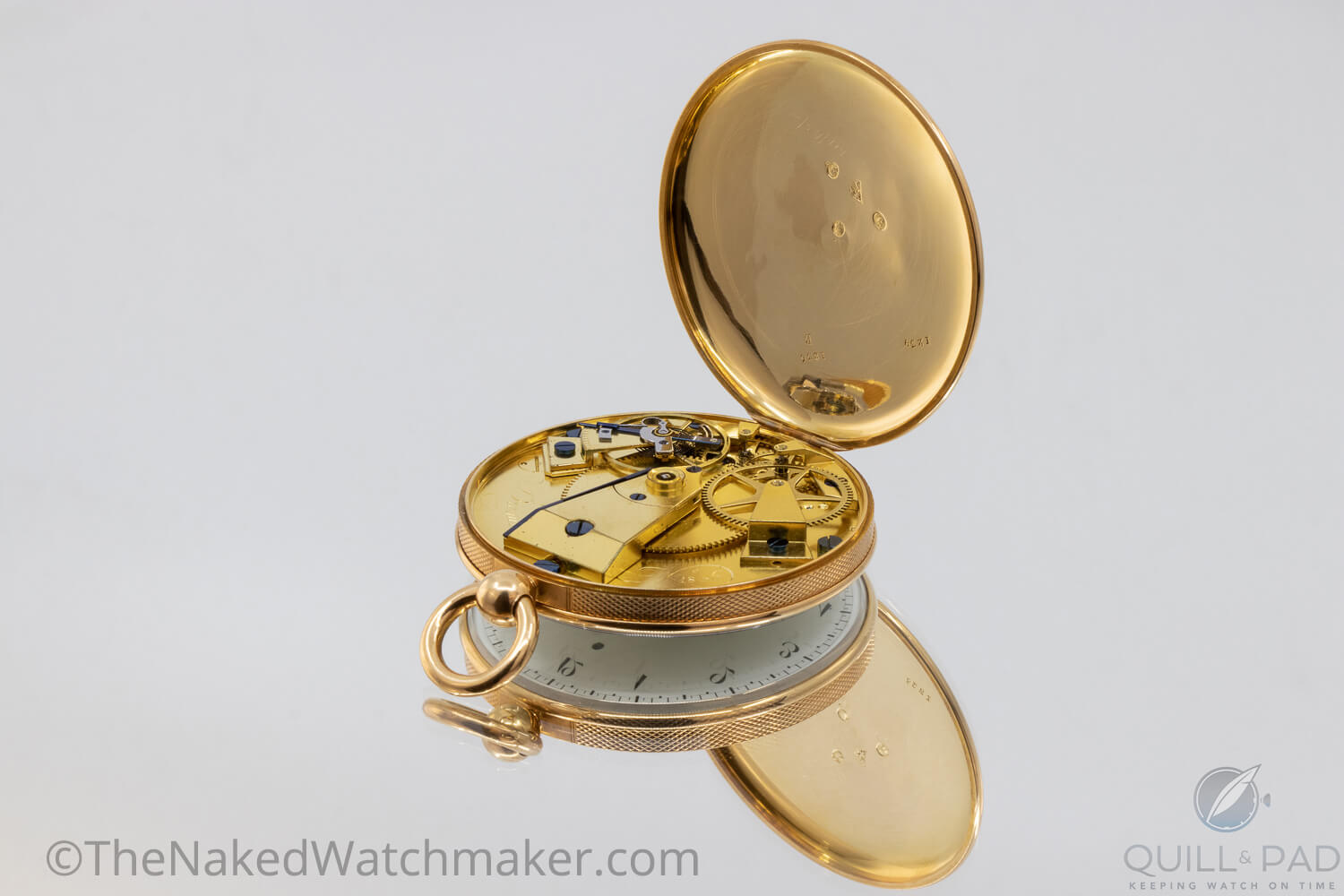
Frosted finishing throughout the movement of the Abraham-Louis Breguet Souscription pocket watch
To keep the cost of his Souscription pocket watches low in cost, Abraham-Louis Breguet decided on a relatively simple movement architecture. This would have the benefit to Breguet of the watch being easier, faster, and cheaper to produce, and the benefit to the owner of being able to have it serviced by any skilled watchmaker rather than one of the world’s best – and most expensive.
Breguet Souscription pocket watch: innovative ruby cylinder escapement
While Breguet’s échappement naturel (another of his ineventions) was a more precise regulator over a longer period because it has less friction (so was less dependent on good lubrication), it had the disadvantage – especially in a watch for a more general public – of easily stopping due to shocks or bumps. And, worse, it would not automatically restart.
For his Souscription watch movements, Breguet decided on using the relatively simple cylinder escapement; however, it had the disadvantage of relatively high friction, which made good lubrication essential. The escape wheel of the cylinder escapement locked in position by pushing directly on the balance staff in such a way that its oscillations were constantly disturbed, which adversely affected timing.
Unfortunately, good lubrication did not exist at the time: watchmakers used animal oils and greases. Breguet – as with all watchmakers of his time – was hampered in his attempts at higher precision and better reliability by the poor quality of the then-available animal oil that was particularly detrimental to the performance of the cylinder escapement.
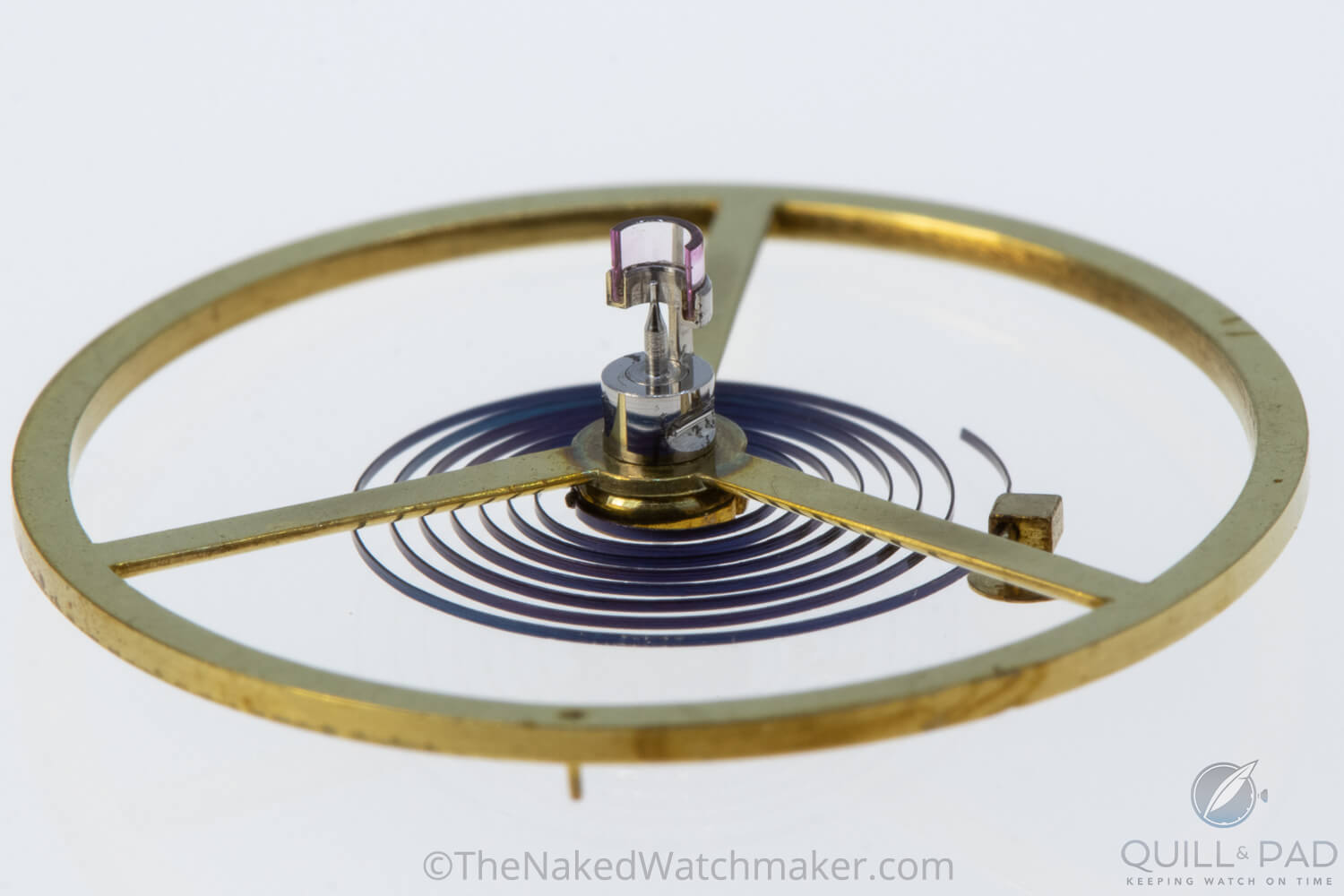
Innovative ruby bearing jewel-set cylinder escapement in Abraham-Louis Breguet’s Souscription watch movement
Rather than accept the limitation of poor accuracy from the cylinder escapement as soon as the escapement oils degraded as the tradeoff for lower price, Breguet optimized it with a ruby half-cylinder that transmits impulses to the escape wheel with relatively minimal friction in the escapement, making it less affected by fast degrading oils.
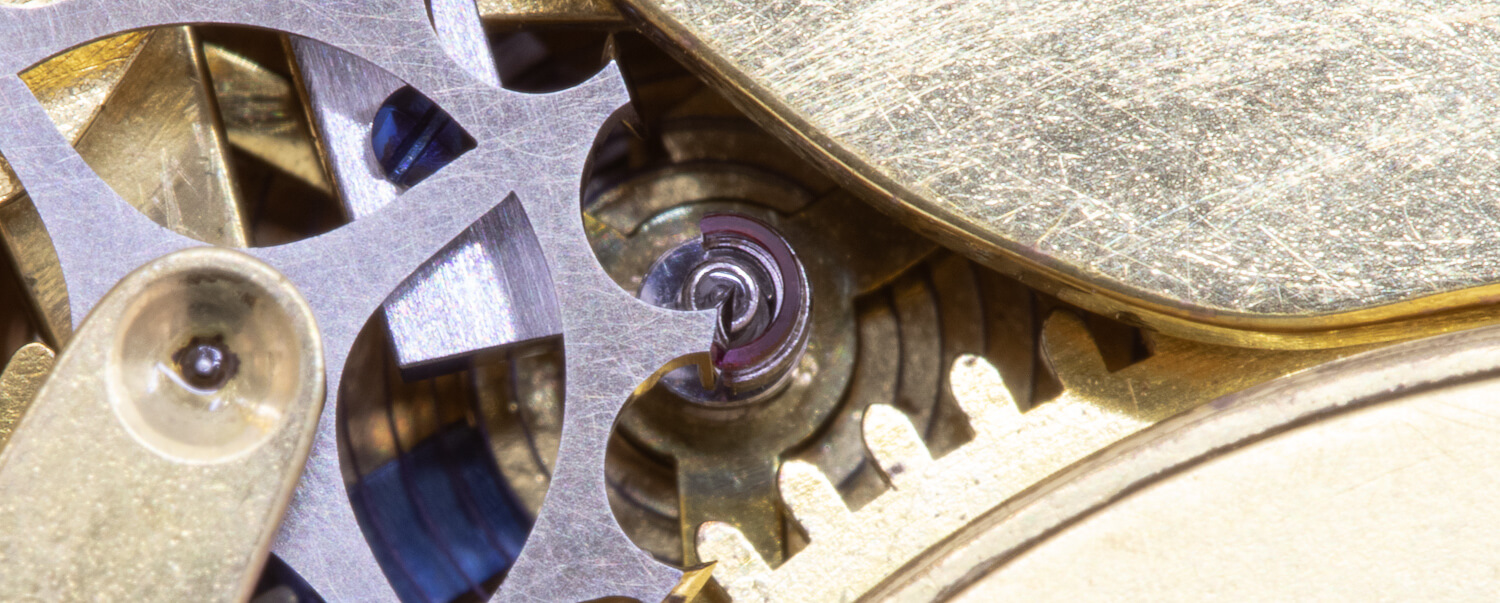
A ruby jewel set cylinder escapement regulates the Abraham-Louis Breguet Souscription pocket watch
In his deconstruction of the Abraham-Louis Breguet Souscription pocket watch, The Naked Watchmaker reported having seen no trace of wear on the ruby, and this on an escapement that has seen much use over more than 200 years!
Breguet Tradition Automatique Seconde Rétrograde: innovative silicon balance spring with Breguet overcoil escapement
In symmetry with Abraham-Louis Breguet’s innovative upgrade to improve the relatively simple escapement on his Souscription watch, more than 200 years later the modern Breguet company fitted the Tradition with an innovative Swiss lever escapement featuring a silicon balance spring.
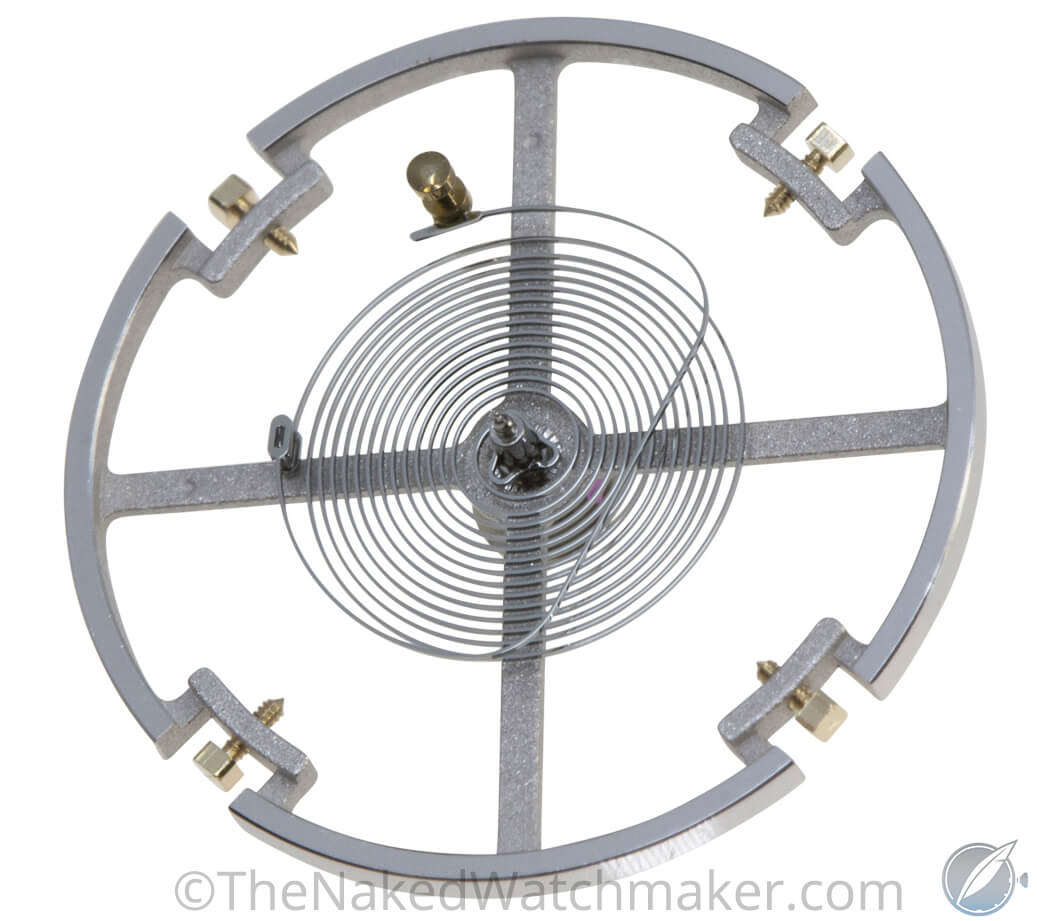
The balance wheel of the Breguet Tradition Automatique Seconde Rétrograde 7097 comprises rhodium-plated Glucydur and a three-piece silicon balance spring with Breguet overcoil
And going one step further, not because anyone will notice, but because it’s the right thing to do (the “Breguet” thing to do), the silicon spring has been fitted with an overcoil (another Abraham-Louis Breguet invention) that enables the spring coils to breathe in and out more concentrically, thus more isochronically.
Symmetry: then and now
1805: regulator of the Abraham-Louis Breguet Souscription pocket watch features a then state-of-the-art bimetallic balance wheel to improve precision.
2005: regulator of the Breguet Tradition Automatique Seconde Rétrograde features a contemporary state-of-the-art free-sprung silicon balance spring with Breguet overcoil to improve precision.
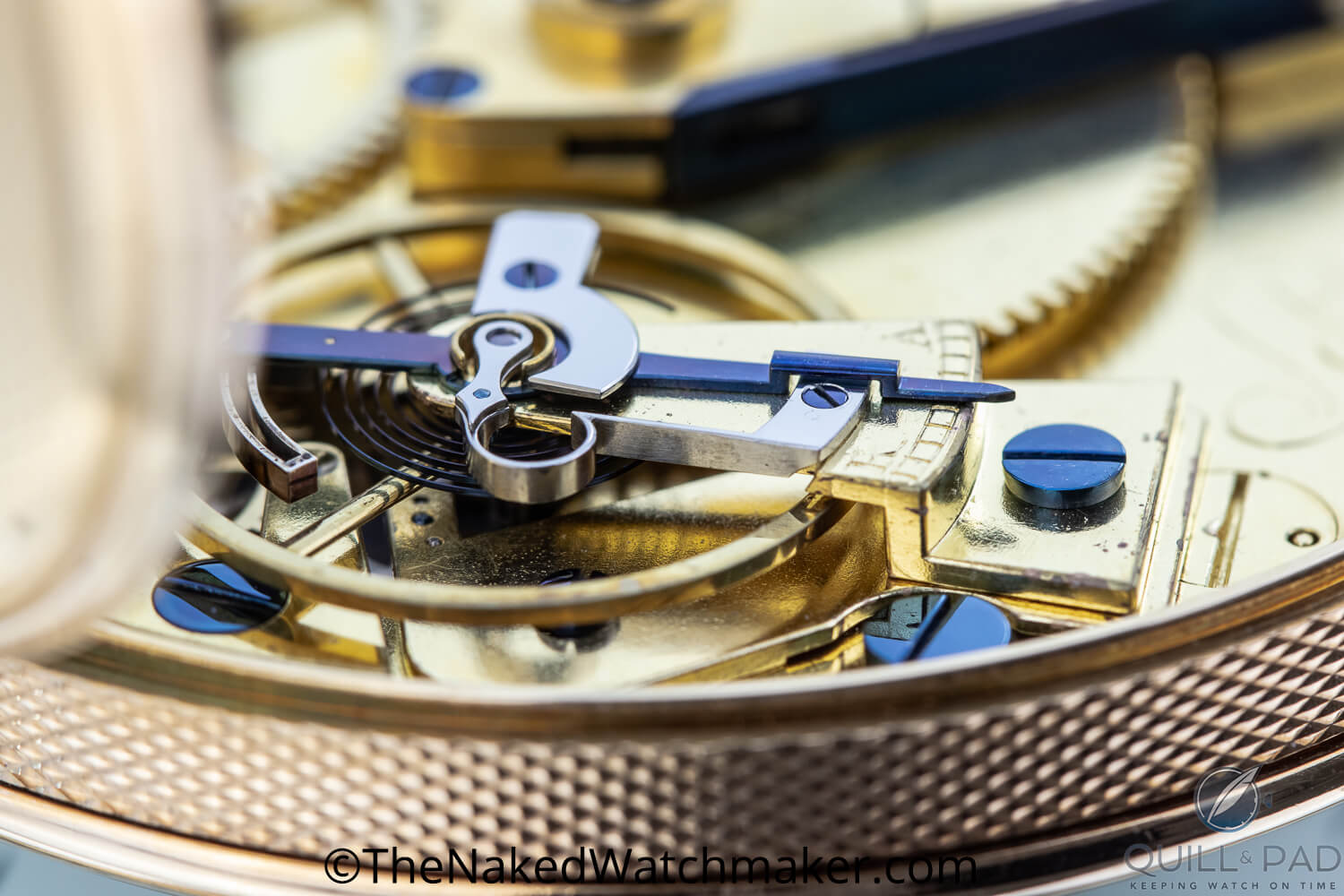
Pare-chute balance shock protection system invented by Abraham-Louis Breguet in this Souscription pocket watch circa 1805
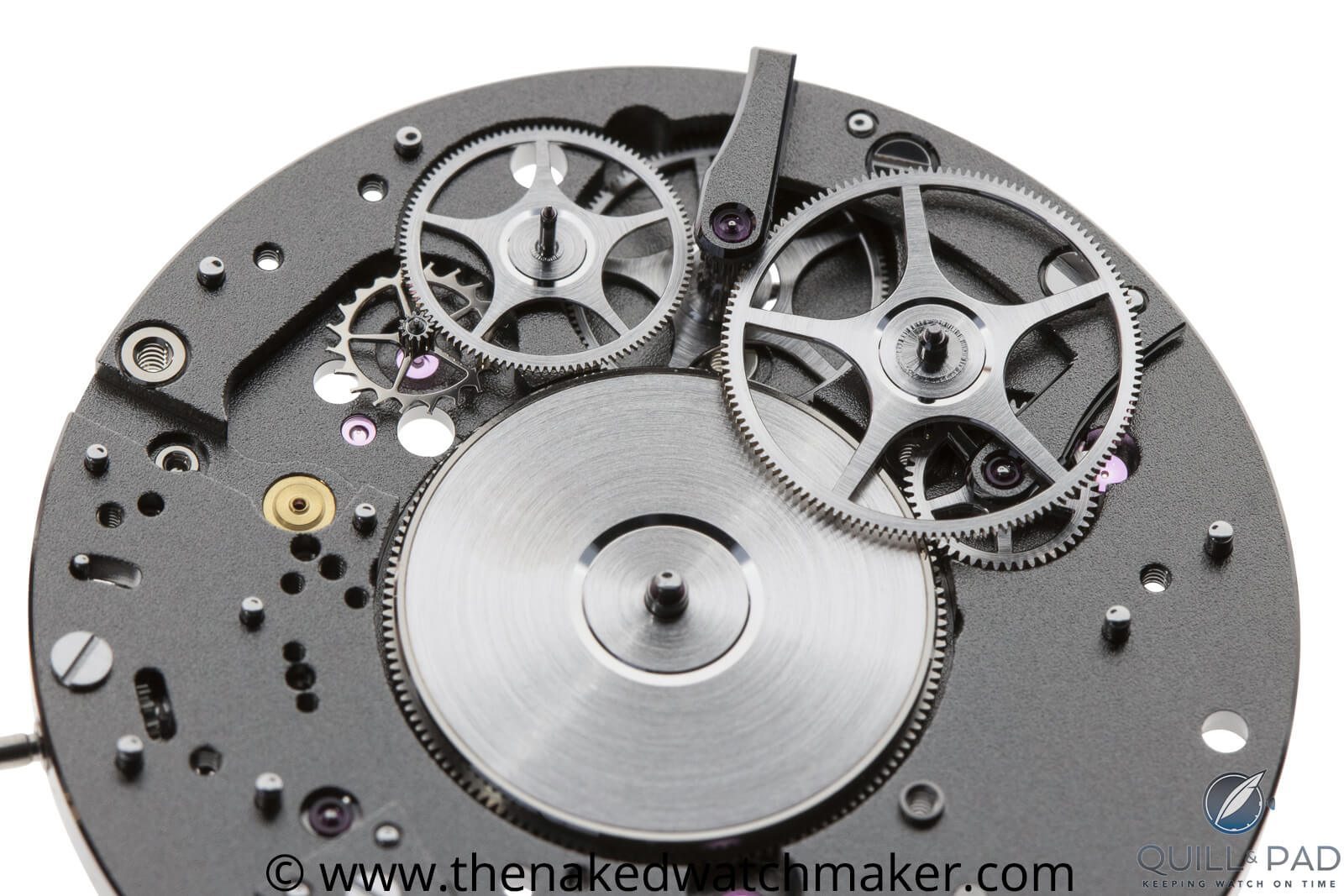
Note the shape of the gear wheels in the Breguet Tradition Automatique Seconde Rétrograde as well as the frosted finish
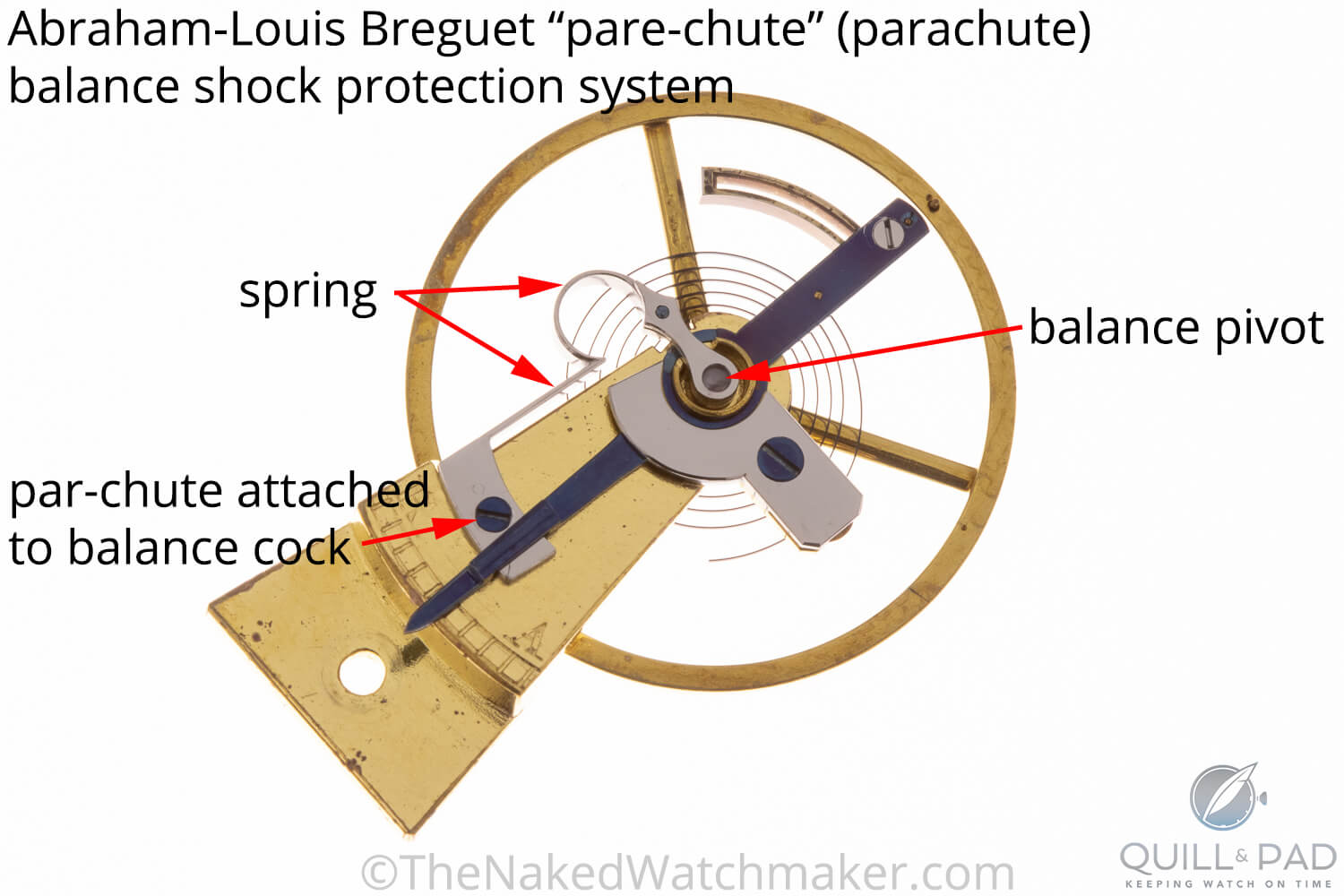
Pare-chute balance shock protection system invented by Abraham-Louis Breguet
1805: balance protected by fully functional pare-chute shock protection system (yet another Abraham-Louis Breguet invention).
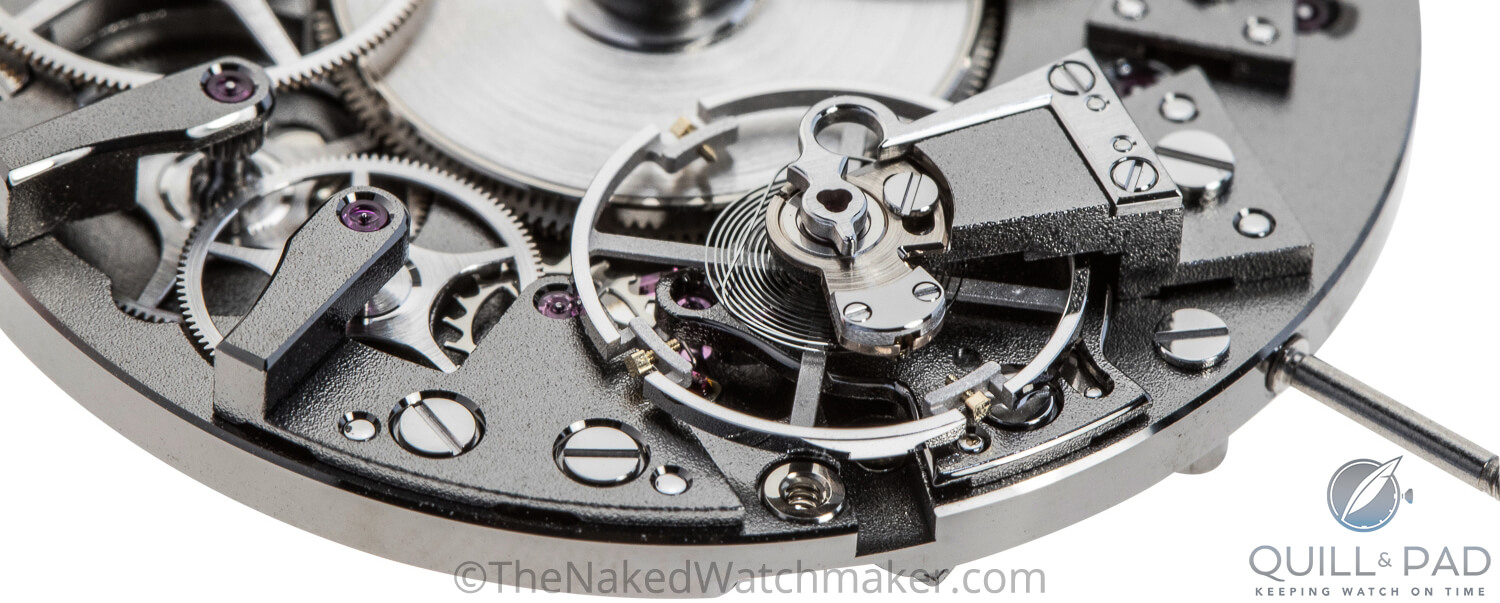
Pare-chute balance shock protection system in the Breguet Tradition Automatique Seconde Rétrograde 7097
2005: balance protected by a modern fully functional pare-chute shock protection system (updating Abraham-Louis Breguet’s original invention).
The Breguet Tradition Automatique Seconde Rétrograde’s automatic winding rotor
While the distinctive shape of the automatic winding rotor on the Automatique Seconde Rétrograde wasn’t inspired in the slightest by the key-winding Souscription featured in this article, it was inspired by Abraham-Louis Breguet’s own invention of a self-winding system with rotor.
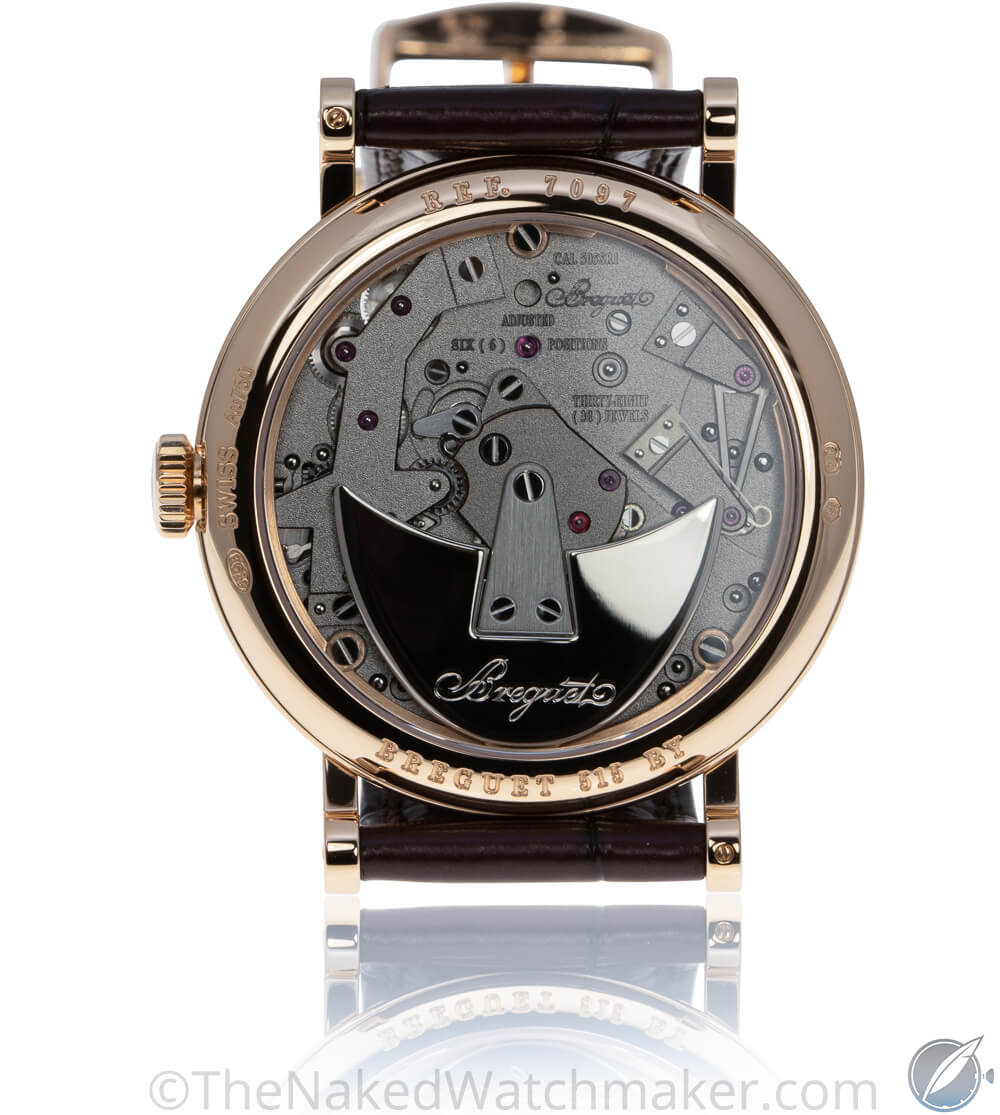
Distinctive winding rotor visible through the display back of the Breguet Tradition Automatique Seconde Rétrograde 7097
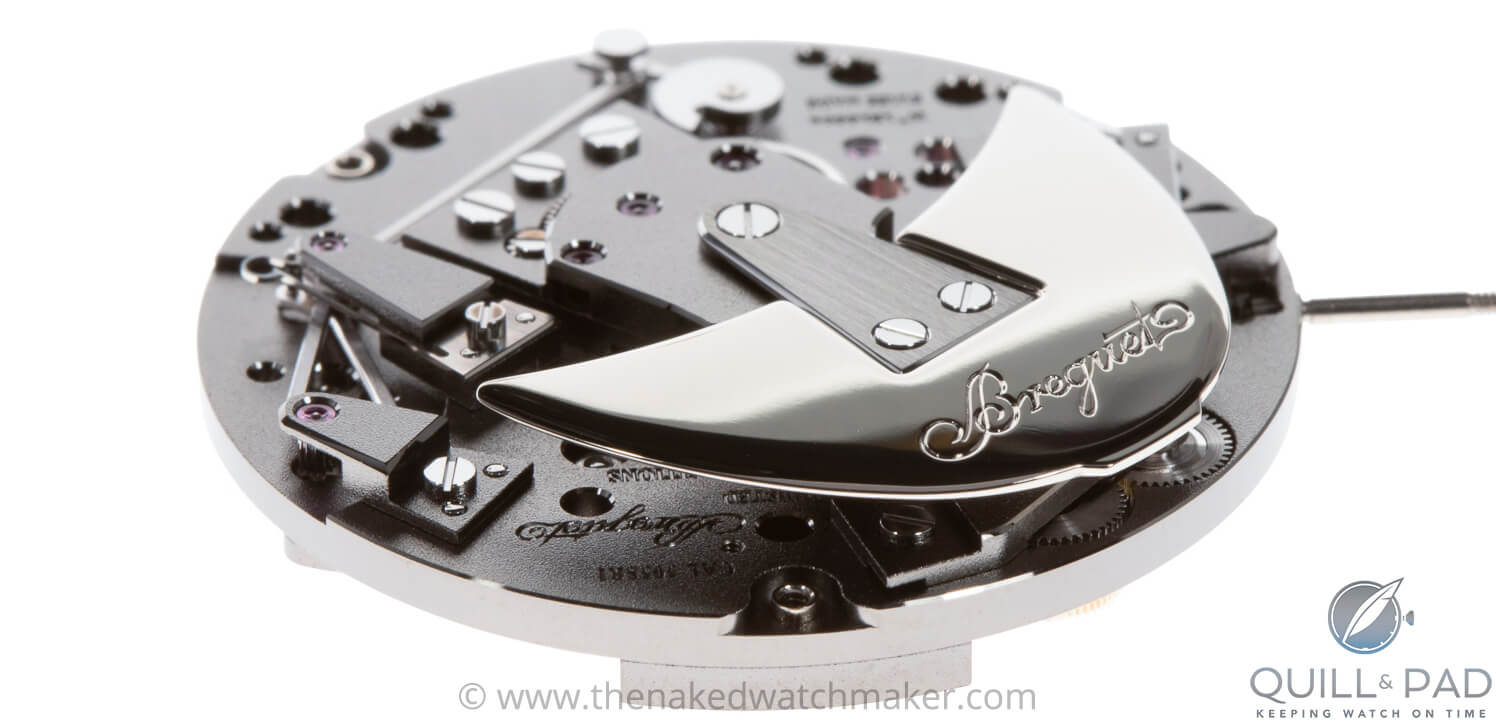
Polished gold anchor-shaped winding rotor of the Breguet Tradition Automatique Seconde Rétrograde 7097
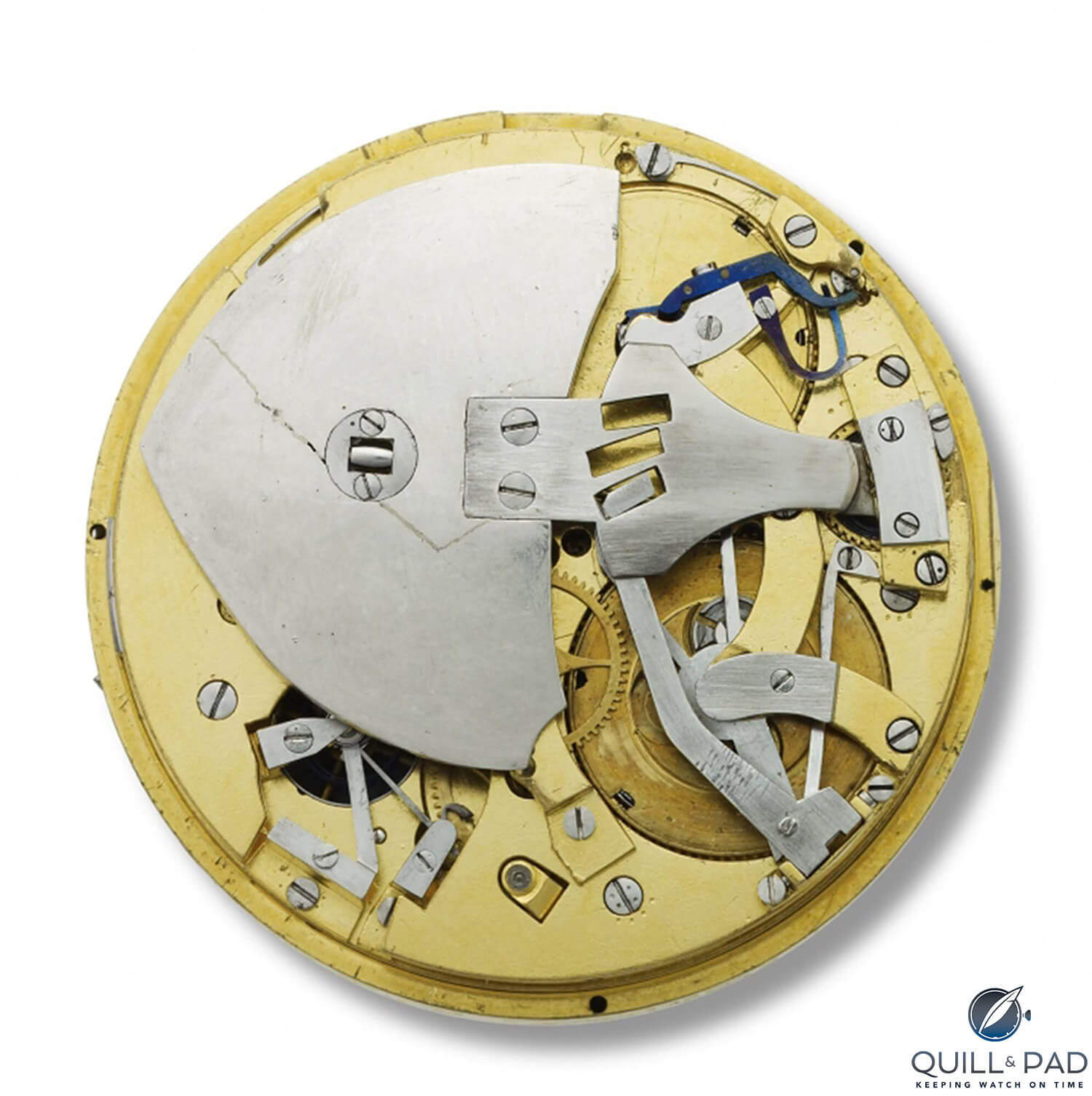
Abraham-Louis Breguet self-winding pocket watch movement (photo courtesy Breguet)
Its unusual shape came about because in the two-century-old movement, the rotor could not/did not rotate through 360 degrees. Being relatively narrow increased the angle it was able to swing through.
Summary
When I saw my first Breguet Tradition back in 2005, I loved it. I loved the open movement and it just clicked for me. I wanted one. But . . .
The look of the Tradition was so distinctive, so apart from anything else at the time in blending the old with the new that I worried that it was a style that might become quickly dated rather than evolve into a classic. And that’s something that cannot be judged contemporaneously; becoming a classic takes time.
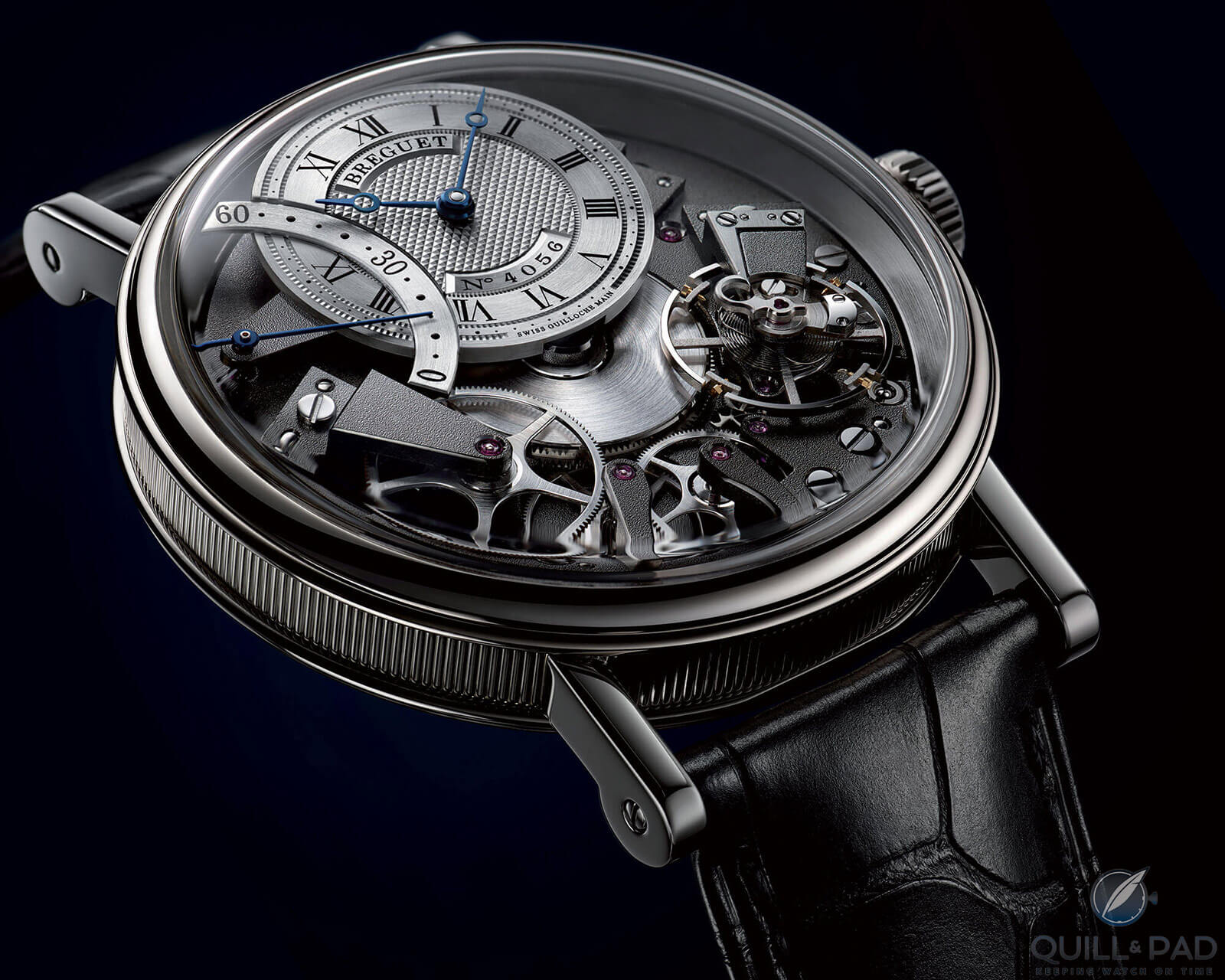
Breguet Tradition Automatique Seconde Rétrograde
But here we are nearly 15 years later, and the Breguet Tradition is looking just as good to me as it did then. It may not be a classic just yet (I think that we need more than 20 years to answer that), but it’s certainly on the right track.
For more information, please visit www.breguet.com/en/timepieces/tradition/7097.
For much more on The Naked Watchmaker’s deconstructions, please visit www.thenakedwatchmaker.com/land-decon-breguet-7097 and/or www.thenakedwatchmaker.com/decon-breguet-souscription.
Quick Facts Breguet Tradition Automatique Seconde Rétrograde 7097
Case: 41 x 16 mm, 18-karat white gold, red gold and platinum
Movement: automatic Caliber 505 SR1, silicon free-sprung balance spring, 50-hour power reserve, 4 Hz/28,800 vph frequency, 241 components, inverted straight-line lever escapement
Functions: hours, minutes; power reserve indication
Price: from €32,700
*This article was first published March 1, 2019 at Breguet Tradition Automatique Seconde Rétrograde 7097 And Abraham-Louis Breguet Souscription Pocket Watch Deconstructions: What The Naked Watchmaker Didn’t Reveal.
You may also enjoy:
Breguet Classique 5177 Deconstruction: What The Naked Watchmaker Didn’t Reveal
Breguet Marine Alarme Musicale 5547: Keeping Technological Traditions Alive
The Breguet A2: It Does Up To 40 Kilometers Per Hour And Doesn’t Tell The Time



Leave a Reply
Want to join the discussion?Feel free to contribute!